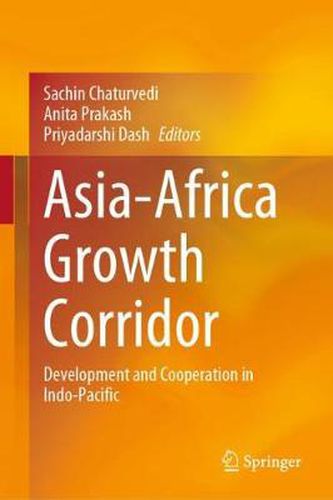Readings Newsletter
Become a Readings Member to make your shopping experience even easier.
Sign in or sign up for free!
You’re not far away from qualifying for FREE standard shipping within Australia
You’ve qualified for FREE standard shipping within Australia
The cart is loading…






This title is printed to order. This book may have been self-published. If so, we cannot guarantee the quality of the content. In the main most books will have gone through the editing process however some may not. We therefore suggest that you be aware of this before ordering this book. If in doubt check either the author or publisher’s details as we are unable to accept any returns unless they are faulty. Please contact us if you have any questions.
This book is a rich addition to the existing knowledge on models of development partnership among developing countries. Unlike the Belt and Road Initiative (BRI), which exclusively focuses on physical infrastructure development with a strong financing component by China, the Asia-Africa Growth Corridor (AAGC) envisages a holistic approach toward development partnership based on the spirit of triangular cooperation, demystifying the donor-recipient model of development cooperation. By integrating four distinct pillars of cooperation - connectivity and physical infrastructure, capacity building and skill development, development cooperation projects, and people-to-people and business-to-business partnerships - the book provides a succinct account of how a demand-driven people-centric model of engagement among Asian and African countries could help achieve inclusive and sustainable development without creating any fatal dependence on specific countries or institutions for external funding.
In sixteen chapters, the book covers various theoretical, analytical, and policy discussions with respect to the concept and modalities of the growth corridor approach under the free, open, and inclusive Indo-Pacific; potential opportunities and challenges in economic sectors and fields like agriculture, manufacturing, trade and investment, urbanization, industrialization, human resource development, and the blue economy; social sector priorities including health, education, skill development, disaster management, and women’s participation; and policy issues relating to trade facilitation, the identification of joint projects, modalities and instruments of project execution, and related aspects. The book offers a valuable resource for students and research scholars working in the fields of development economics, development cooperation, international political economy, and international economic relations. It also serves as a handbook for governments and policymakers on issues concerning the suitability of development projects, sources of and innovations in financing, implementation and execution challenges, private sector involvement, and so on.
$9.00 standard shipping within Australia
FREE standard shipping within Australia for orders over $100.00
Express & International shipping calculated at checkout
This title is printed to order. This book may have been self-published. If so, we cannot guarantee the quality of the content. In the main most books will have gone through the editing process however some may not. We therefore suggest that you be aware of this before ordering this book. If in doubt check either the author or publisher’s details as we are unable to accept any returns unless they are faulty. Please contact us if you have any questions.
This book is a rich addition to the existing knowledge on models of development partnership among developing countries. Unlike the Belt and Road Initiative (BRI), which exclusively focuses on physical infrastructure development with a strong financing component by China, the Asia-Africa Growth Corridor (AAGC) envisages a holistic approach toward development partnership based on the spirit of triangular cooperation, demystifying the donor-recipient model of development cooperation. By integrating four distinct pillars of cooperation - connectivity and physical infrastructure, capacity building and skill development, development cooperation projects, and people-to-people and business-to-business partnerships - the book provides a succinct account of how a demand-driven people-centric model of engagement among Asian and African countries could help achieve inclusive and sustainable development without creating any fatal dependence on specific countries or institutions for external funding.
In sixteen chapters, the book covers various theoretical, analytical, and policy discussions with respect to the concept and modalities of the growth corridor approach under the free, open, and inclusive Indo-Pacific; potential opportunities and challenges in economic sectors and fields like agriculture, manufacturing, trade and investment, urbanization, industrialization, human resource development, and the blue economy; social sector priorities including health, education, skill development, disaster management, and women’s participation; and policy issues relating to trade facilitation, the identification of joint projects, modalities and instruments of project execution, and related aspects. The book offers a valuable resource for students and research scholars working in the fields of development economics, development cooperation, international political economy, and international economic relations. It also serves as a handbook for governments and policymakers on issues concerning the suitability of development projects, sources of and innovations in financing, implementation and execution challenges, private sector involvement, and so on.